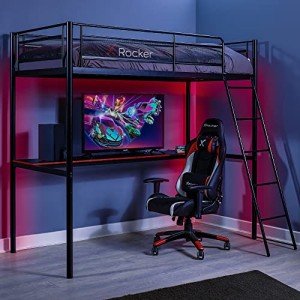Bunk beds have actually long been a popular choice amongst moms and dads seeking to optimize space in their children's bed rooms. With advantages that surpass their compact design, bunk beds offer a fun and practical sleeping arrangement while motivating brother or sister bonding and cultivating imagination. In this extensive guide, we explore different elements of bunk beds for kids, including safety considerations, different styles available, and recommendations for selecting the best one for your family.
Bunk beds are designed to stack one bed on top of another, utilizing vertical space to develop more space for play and storage. They are particularly helpful for families with multiple children or limited bed room space. Furthermore, they provide a daring sleeping environment that kids typically take pleasure in.

When selecting a bunk bed for kids, security ought to be the top priority. The following features are vital for making sure a protected sleeping environment:
Bunk beds come in a range of styles, enabling parents to pick one that complements their kid's space decoration while conference specific needs. Below are some popular designs:
| Bunk Bed Style | Description | Best For |
|---|---|---|
| Conventional | Timeless design with 2 stacked beds | Requirement bed room setups |
| Loft Bed | Raised bed with usable space underneath | Homework or play locations |
| L-Shaped | Bunk beds arranged in an L-shape | Corner spaces |
| Twin over Full | Twin bed on top, complete bed below | Various age brother or sisters |
| Triple Bunk | Three stacked beds | Large households or pajama parties |
When browsing for the ideal bunk bed, consider the list below aspects to guarantee you make an informed choice:
Usually, children aged 6 and older should have the ability to safely oversleep the leading bunk, though you must always consider your kid's maturity level.
It is not recommended for young children or extremely kids to oversleep the top bunk due to the risk of falling.
Inspect the bed regularly for any indications of wear and tear, tightening up screws, and cleaning the bed mattress to ensure extended security and resilience.
Many bunk beds are designed to be convertible, permitting you to separate the beds when needed. Examine the manufacturer's requirements before buying.
Use under-bed drawers, shelves, or lofted designs to develop additional storage services in a room with a bunk bed.
Bunk beds offer a delightful blend of fun, functionality, and space-saving utility, making them a best choice for young families. By considering safety functions, different designs, and useful elements such as room size and age appropriateness, moms and dads can choose the best bunk bed for their child's needs. With the best choice, bunk beds can change a bed room into a wonderful space that encourages play, imagination, and bonding amongst siblings. Constantly remember to focus on safety and upkeep to maximize this unique sleeping arrangement.
No Data Found!

